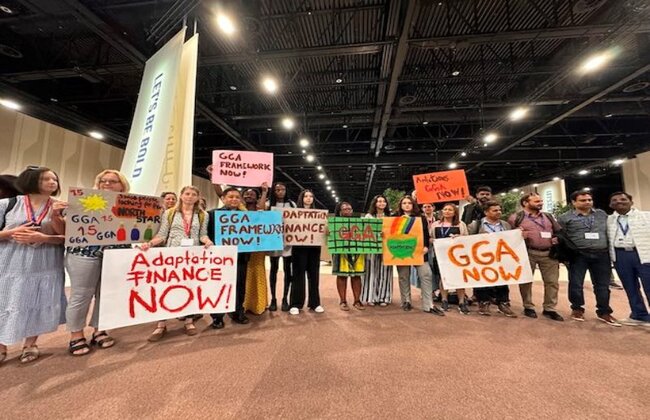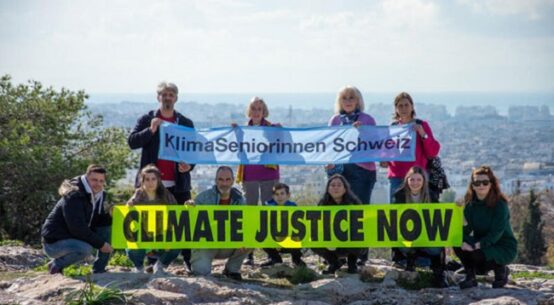
On November 30, the first day of COP28, the much-awaited Loss and Damage Fund—a landmark decision to compensate the world’s most climate-affected and climate-vulnerable people—was declared operational. Announcing the decision, COP28 President Dr Sultan Al Jaber said, ‘the fact that we have been able to achieve such a significant milestone on the first day of this COP is unprecedented. This is historic.”
Formed first at the 27th Conference of the Parties held in Sharm el-Sheikh, Egypt, in 2022, the Loss and Damage Fund has been demanded for several years by climate action advocates and countries seeking financial compensation for people who are most adversely affected by climate change. Different contributors have so far pledged about $700 million to the fund.
The announcement by Al Jaber on November 30 was, as expected, overwhelmingly welcomed by parties and delegates. However, as the conference nears its conclusion, the focus has now shifted towards its implementation, and many participants are expressing their general lack of clarity on the exact next steps.
“We know that the World Bank is going to manage it, and there will be a board for basic assessment. But the money that has come in so far is very small. How this money then goes to small CSOs (civil society organizations) and women-led organizations is anyone’s guess,” says Dilruba Haider, who leads the Women’s Climate Change, Disaster Risk Reduction, and Humanitarian Portfolio in Bangladesh, one of the most climate-vulnerable countries in the world.
The Loss and Damage Fund: A Brief History
Loss and damage refer to the negative consequences that arise from the unavoidable risks of climate change, like rising sea levels, prolonged heatwaves, desertification, the acidification of the sea, and extreme events such as bushfires, species extinctions, and crop failures. As the climate crisis unfolds, these events will happen more and more frequently, and the consequences will become more severe.
For example, in 2022, Pakistan witnessed severe flooding, now known as the ‘super flood,’ which caused damage amounting to US$30 billion. But as a nation, Pakistan only emits less than 1 percent of global emissions. Combined with Bangladesh, another highly impacted country in South Asia, in 2022 alone, climate change caused losses worth approximately USD 36 billion and the displacement of about 50 million individuals.
The core thought behind the Loss and Damage Fund is that it is necessary to tackle the gaps that current climate finance institutions such as the Green Climate Fund (GCF) do not fill. The combined adaptation and mitigation finance flows in 2020 were USD 17 billion short of the total USD 100 billion pledged to developing countries. Despite the US’s current pledge of USD 1 billion, the need has since multiplied due to the rise in losses and damages brought on by numerous disasters, making USD 100 billion woefully insufficient.
Access Mechanism: What’s Clear, What’s Not
Liane Schalatek is the Associate Director of Heinrich-Böll-Stiftung in Washington, DC, where she spearheads the foundation’s work on climate finance. Schalatek has been tracking the flow of finance into the GCF for years and is also actively following the developments at the Loss and Damage Fund since its inception.
Schalatek, who has created an infographic to explain the basic facts and characteristics of the fund, says that, like the Green Climate Fund, contributions to the Loss and Damage Fund are also voluntary and without a strict timeline for fulfilling the pledges. The World Bank will be the main facilitator of the fund, but a 26-member board will be constituted to govern it. Of them, 14 members will be from developing countries, and the members will have a rotational tenure. The remaining 12 members will be from developed countries.
The first meeting of the board, according to the COP28 document, is expected to be held in January 2024, while three meetings of the board are expected to be held before the next COP.
It is also known that the Loss and Damage Fund will have multiple modalities, meaning that the funding will be given in different ways. For example, some money may be going through the organizations that are already accredited for managing climate finance; some money may be going to the national governments; and others, like NGOs, may also receive some. So far, the developing countries are demanding that the money be given to their governments, Schalatek says.
What Most-Affected Countries Want
Mirza Shawkat Ali is one of the most senior and experienced members of the Bangladesh delegation and has represented his country at multiple COPs. Ali says that while the concept of giving communities direct access to the fund is noble, from an operational perspective, it would be far easier if the funding was channeled through the national government. The reason, explains Ali, is that it could be extremely difficult to track the flow of the fund and also coordinate with various organizations in a timely manner unless detailed information is not shared in a timely manner.
“The biggest problem we could face is while reporting to the UN on the progress achieved with the fund that has been received. How can we do that if we don’t know the details of how and how much of the fund is coming and to whom it is coming?” Ali asks.
“For us, it would be both easier and more realistic if the government received the fund. We have the infrastructure that is needed to receive, disburse, and utilize the fund. We can also track and report back to the funder,” Ali says.
Haider of UN Women appears to agree with Ali: “I think the government could take some initiatives. If the government could access the funding, it could provide some budgeted support. And if the government then comes with some policies, some directives, selection criteria, and prioritization to support women-led initiatives, then that might be one way.”
María Elena Hermelinda Lezama Espinosa, Governor of Quintana Roo Province, Mexico, also supports the channeling of loss and damage funding through the government.
“We have already been implementing so many programs to help local communities overcome climate change impacts, especially in the areas of water and land. We will be happy to receive this fund to advance our work further,” she says.
From a different perspective, many civil society leaders are strongly advocating for direct access to the fund for extremely vulnerable and highly affected communities.
Anika Schroeder, Climate Policy Officer at Germany-based environmental organization Miseroer, who works with climate-affected communities globally, including Indonesia and Nepal, says that climate vulnerabilities are also about human rights, and giving climate-vulnerable groups and communities access to the Loss and Damage Fund is important to ensure their basic human rights.
A complex and time-consuming mechanism of accessing the fund could result in the already vulnerable people suffering more, which would then mean greater violations of their human rights, Schroeder argues.
“People think that giving one-time aid support to a disaster-hit community is enough, but that is not right; the same community will keep facing more disasters. And every time they are hit, they cannot go to school, they do not have a house, and they do not have water, so it’s about meeting their basic human rights. If this is not integrated while designing the funding access, then it will not be taken seriously,” Schroeder says.
The Devil Lies in the Details
However, Schalatek reminds us that although the fund mentions direct access for affected communities (such as neighborhood non-governmental organizations), the board will likely only approve a small portion of it. In fact, at present, the money that has been contributed is for the setting up of access mechanisms such as the formation of the board, the selection of the board members, deciding the location of the fund, and other infrastructural details.
“In the jubilations of the approval of the Loss and Damage Fund, people are forgetting that the contributions that have come so far are meant for operationalizing the fund, meaning getting the system and infrastructure in place, and not really for providing to the countries right away. For that, we need more pledges to be made and fulfilled,” Schalatek says. “Will the Loss and Damage Fund go directly to small community organizations? No, we don’t have those commitments right now because none of the windows and the substructures are set up yet; the board will decide on that,” she adds.
Developments on the Green Climate Fund
The first replenishment of the fund—$100 billion—is almost complete, except for the USD 1 billion from the United States that is yet to come. The 2nd replenishment has so far seen pledges of 12.8 billion, of which USD 3.3 billion was announced since the COP28 started, according to a press statement from the Green Climate Fund.
However, there is no fixed timeframe for these pledges to be fulfilled, and contributing countries can give their shares of the money anytime between January 2024 and the end of 2027. “A pledge is as good as a fulfilled commitment, so we will know more about the status of the new pledges once we see the signed contribution agreements from those who are pledging them,” Schalatek says.
Stella Paul is a trainer and mentor of environmental journalists across Asia and Africa. She is the winner of multiple awards and manages environment and health projects at @earthjournalism


